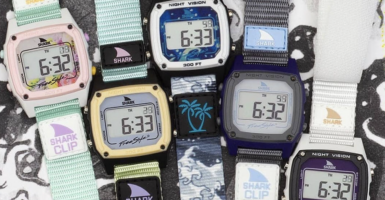Rare Vintage Photos That Show What Life Was Really Like In 1940s America
The United States was technically at peace as the 1940s began, but it was only a matter of time before the attack on Pearl Harbor forced the country’s hand and marked America’s entry into World War II.
As the fierce fighting in Europe, Africa, and the Pacific Theater took place through the early part of the decade, those back at home uneasily went about life even as the war left an impact on countless Americans. The decade drew to a close with an Allied victory and a new era of prosperity and optimism.
Pearl Harbor shook the nation.
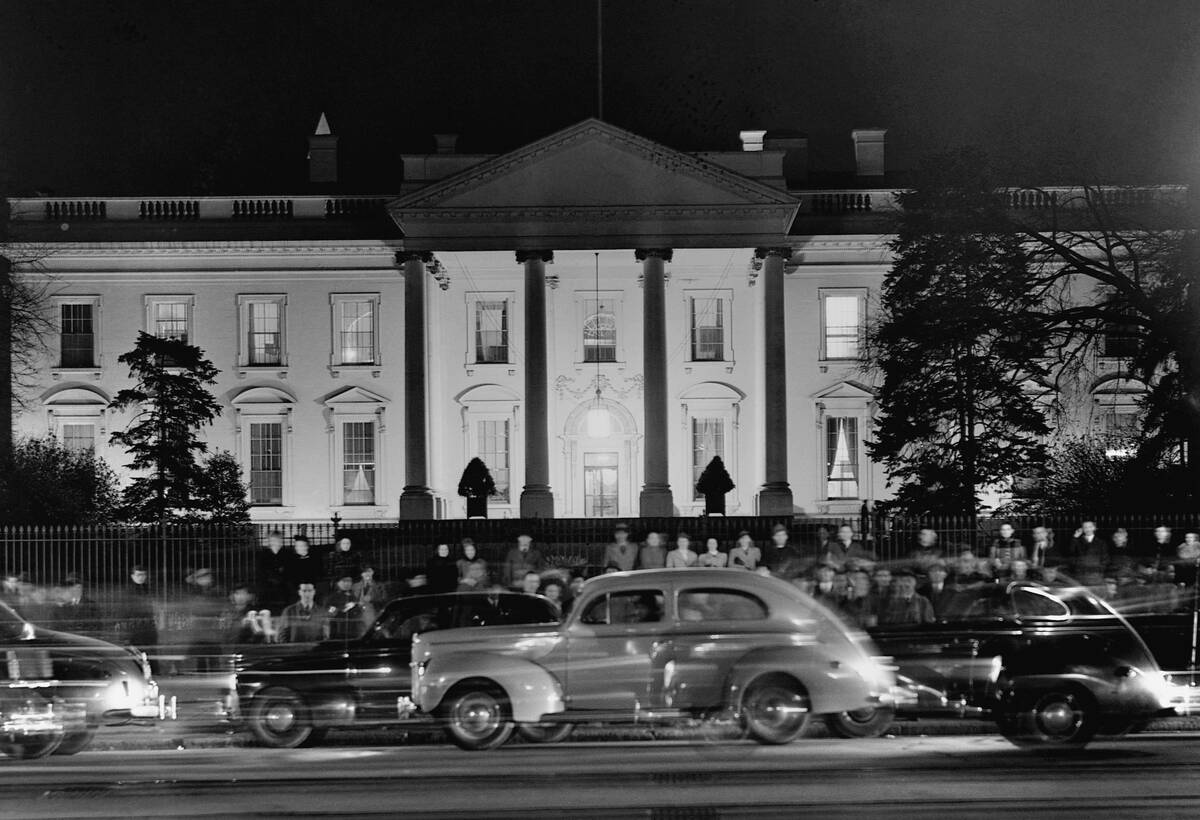
A sea of people and cars can be seen outside of the White House on December 8th, 1941, as reporters and civilians await President Roosevelt’s announcement following the attack on Pearl Harbor.
The surprise attack killed over 2,400 Americans and destroyed much of the country’s Pacific Fleet. Roosevelt famously described it as “a date which will live in infamy” and swiftly declared war on Japan.
Hollywood was hopping.
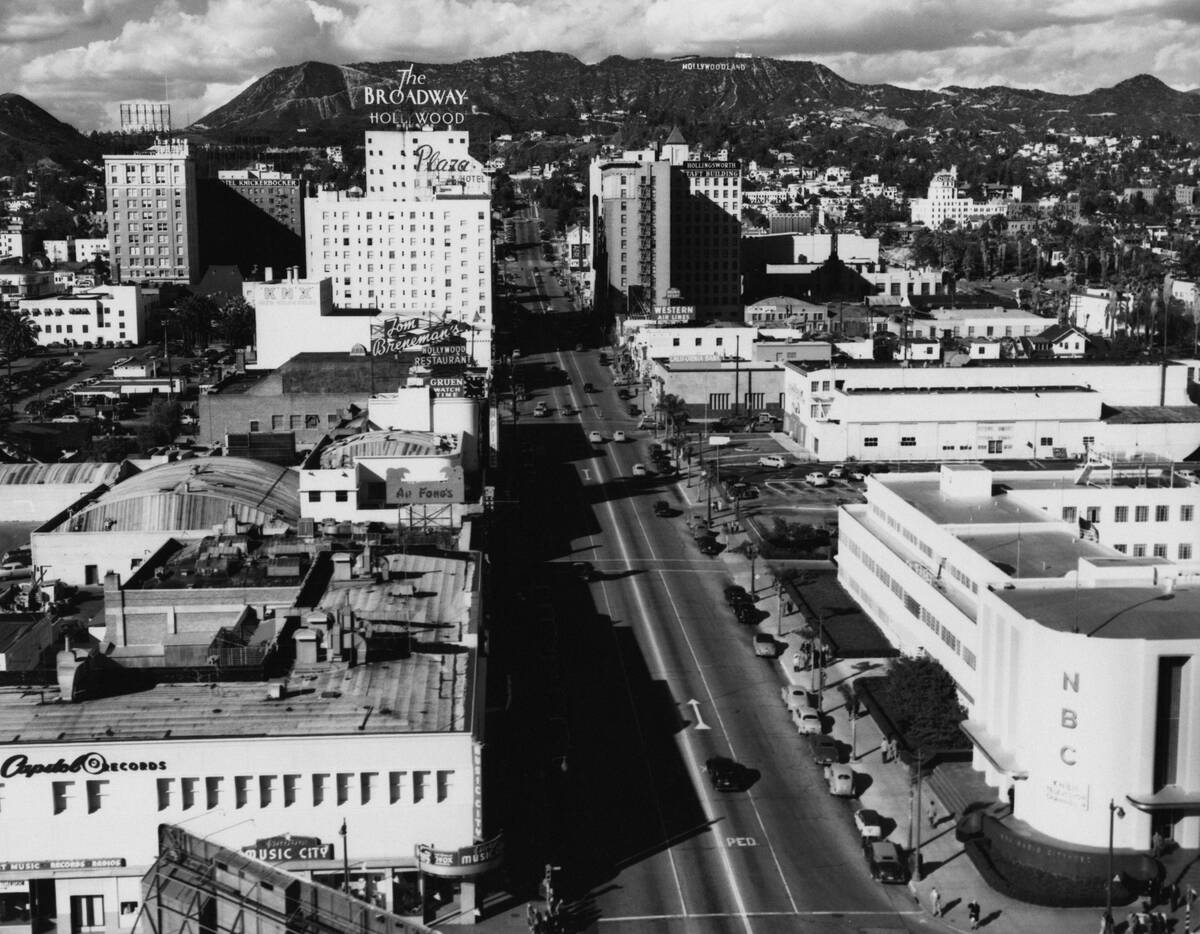
This view down Vine Street in Hollywood in the latter part of the decade shows the famous thoroughfare as well as the Hollywood Sign (which still reads ‘Hollywoodland’) in the top of the image.
The war effort deeply impacted the film industry, but at the war’s conclusion, Hollywood was back in full force. This is the decade that saw the emergence of the film noir genre, reflecting the darker mood of the era.
Hot rods became popular.
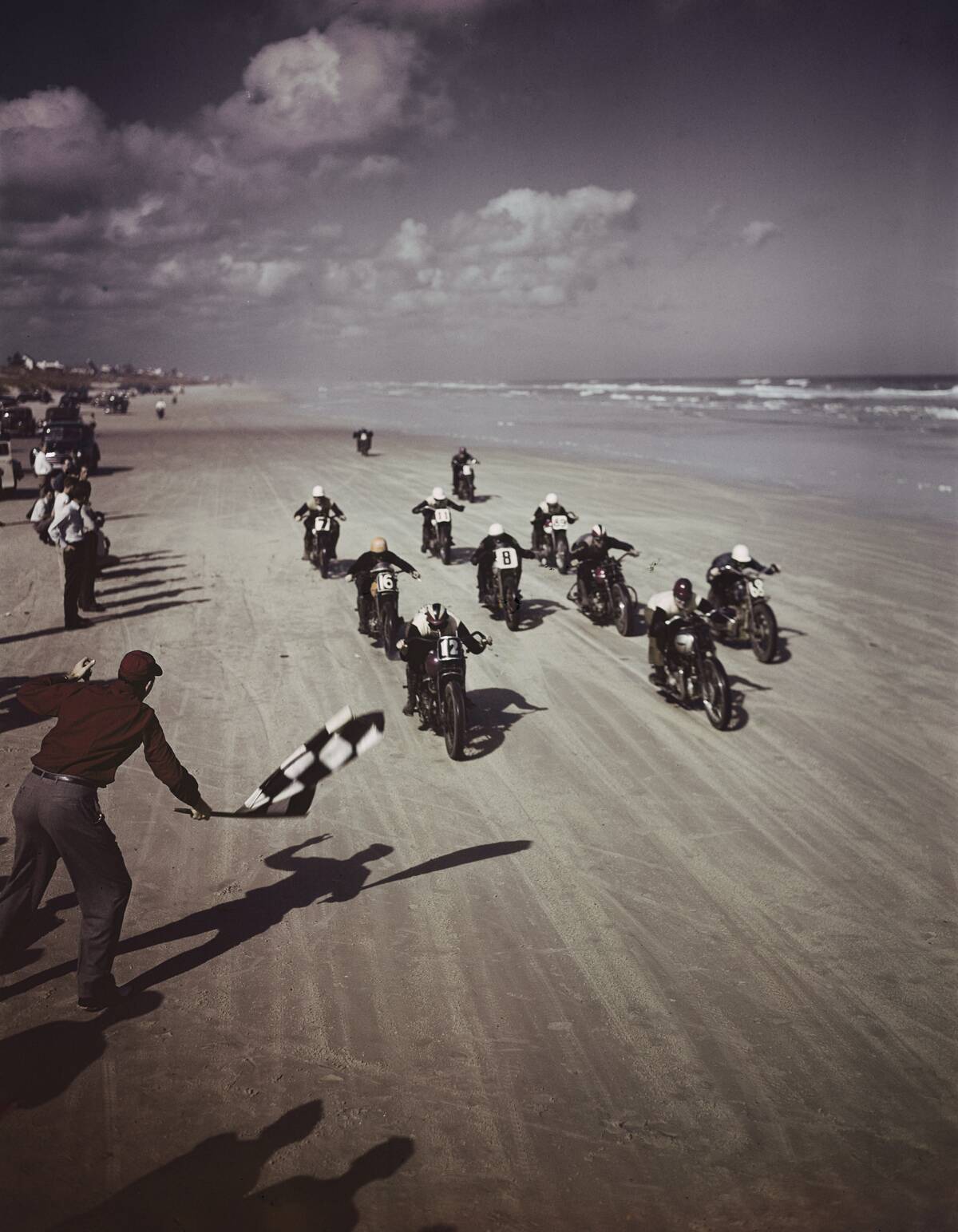
While the famous Daytona 500 didn’t yet exist, this image of motorcycle racers at Daytona Beach shows the deep roots of auto racing in the area.
This nascent form of racing incorporated various types of vehicles, all racing on the hard-packed sand of Daytona Beach. NASCAR was officially founded in 1948, and Daytona became the heart of stock car racing.
Pollution was rampant.
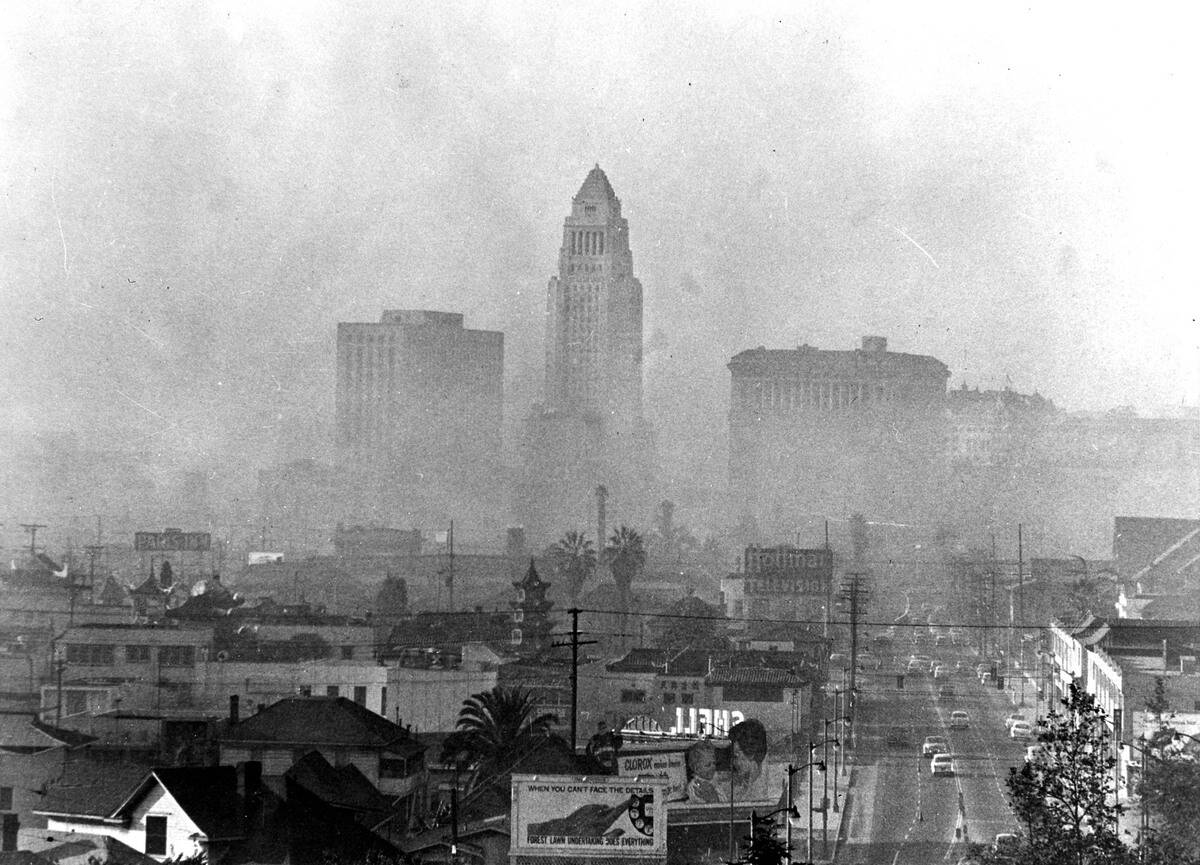
Smog is a phenomenon associated with modern-day Los Angeles, but this 1940s photo shows that pollution and smog were ever-present problems decades earlier.
A thick haze blanketed the city in 1943, prompting war-weary civilians to fear a chemical attack. Scientists later traced the smog to car emissions and industrial pollutants reacted with sunlight, a phenomenon we now know as photochemical smog.
Walt Disney was a force.
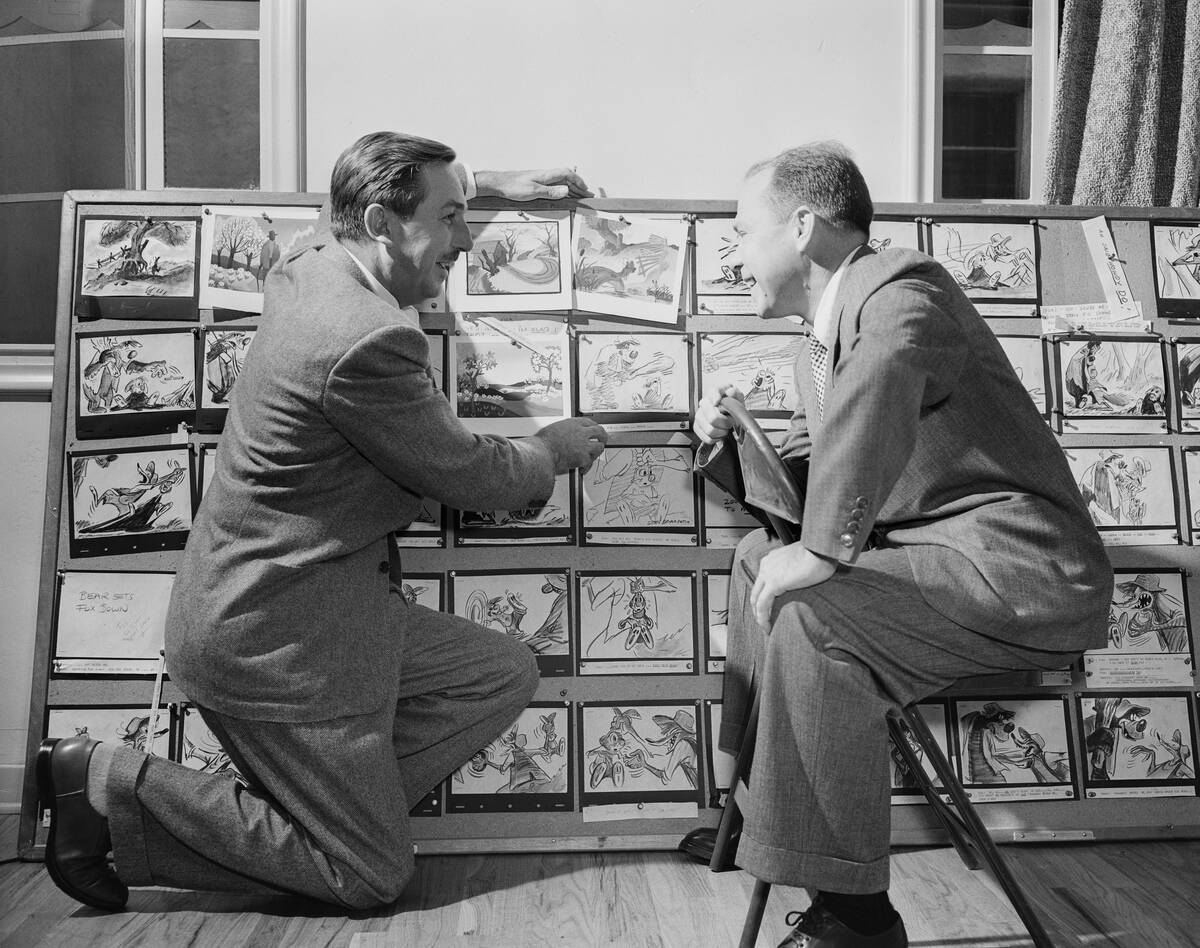
This photo of Walt Disney and musician Johnny Mercer shows the two collaborating on storyboards from Disney’s Song of the South film.
Disney’s other works of the decade included 1940’s Fantasia and 1942’s Bambi, as well as propaganda and training films for the U.S. government. This was a decade that solidified Disney’s influence in both the entertainment industry and the wider American culture.
Industry was booming.
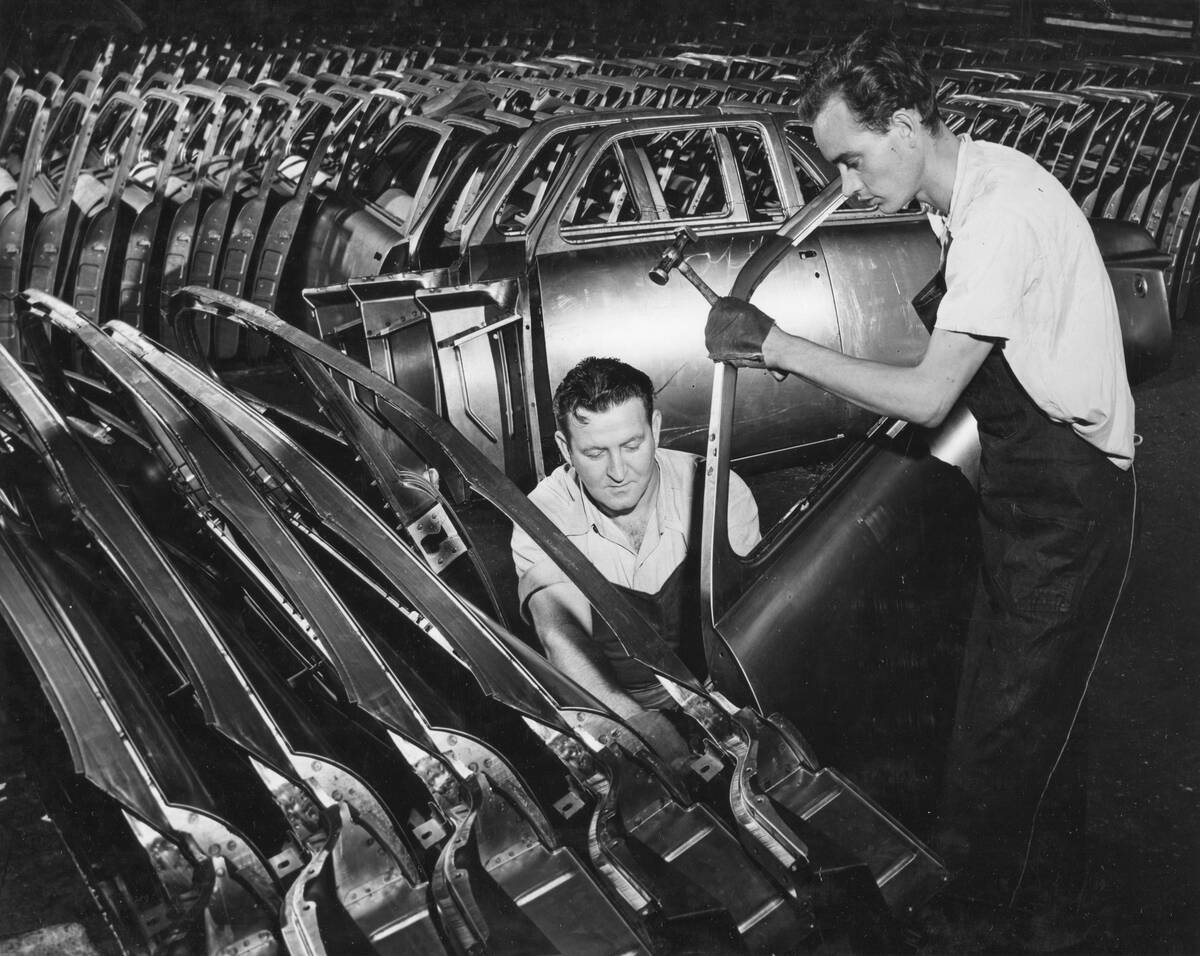
While car culture was on the rise in the prewar years, civilian car production virtually ceased between 1942 and 1945 as car manufacturers pivoted to build tanks, planes, and other wartime vehicles.
Of course, once the war finally ended, auto manufacturers shifted back to their main focus, churning out millions of cars. In the 1950s, the family automobile became a ubiquitous part of American culture.
Air travel was still a luxury.
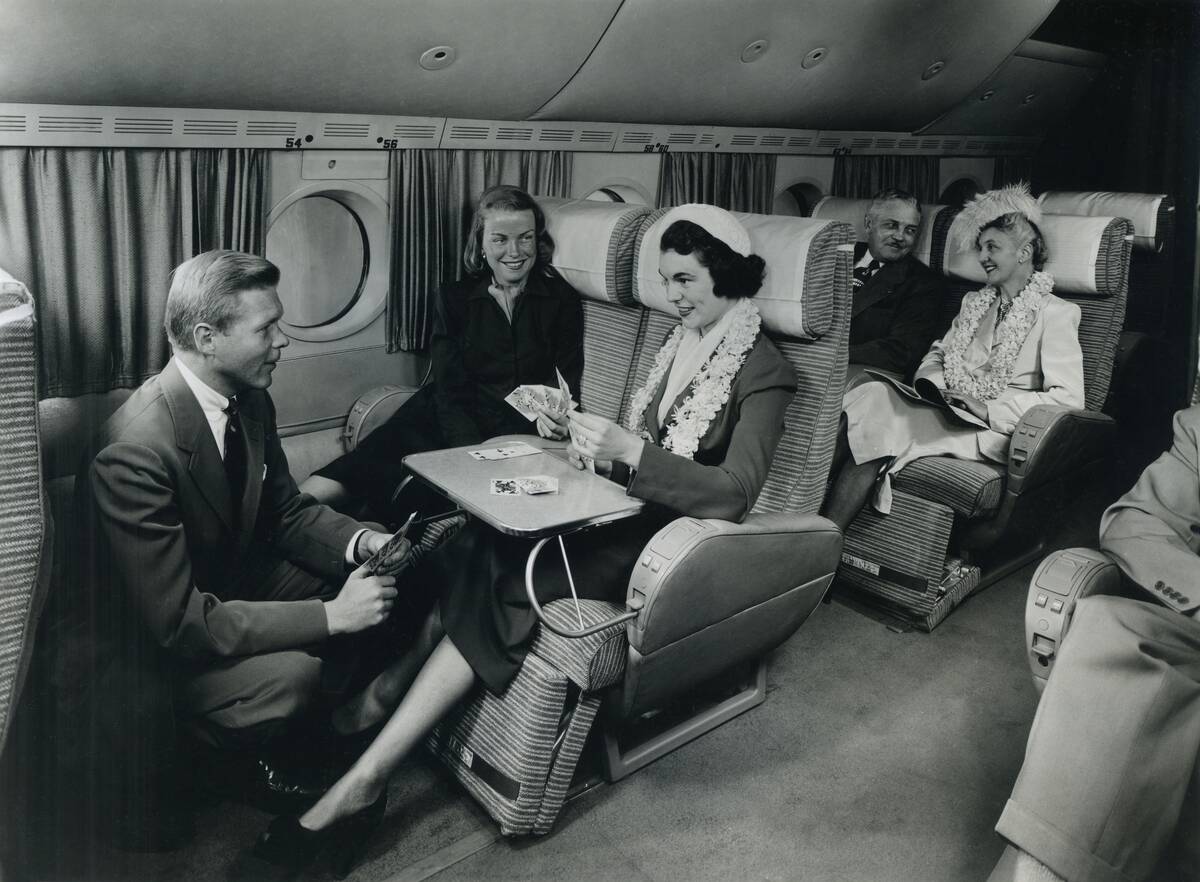
This 1949 image gives a glimpse of the luxurious, comfortable air travel that became a hallmark of the 1950s and ’60s — but for most of the 1940s, air travel was still a luxury primarily enjoyed by the wealthy.
The advanced aviation technology that went into World War II airplanes was adapted to commercial aviation following the war, and within a few years, air travel had supplanted ocean liners as the prime way to cross oceans.
Americans became more prosperous.
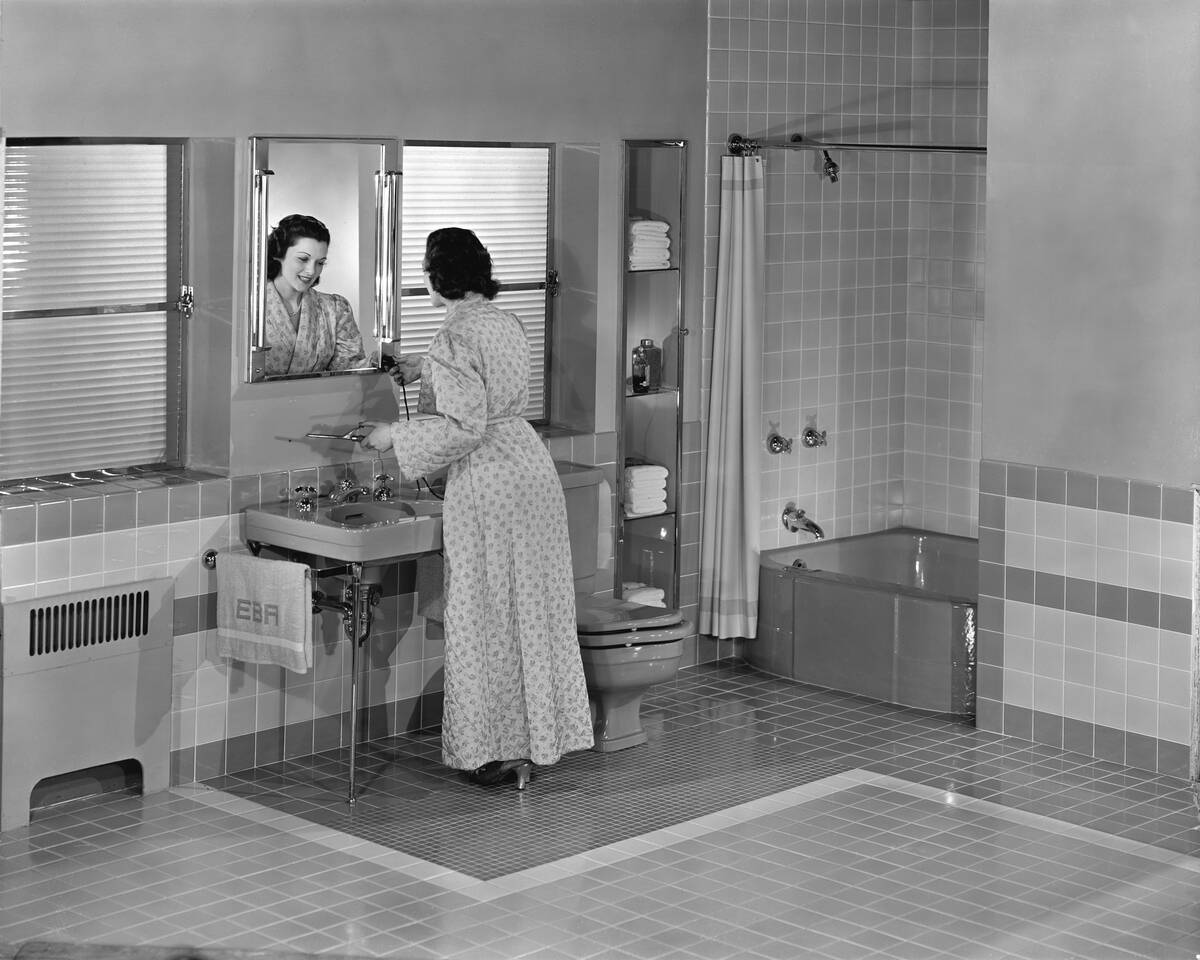
The early part of the decade was a grim time, marked by wartime austerity and rationing of key materials.
War-weary Americans were eager to make a splash after winning the war, though, and styles shifted from prioritizing the necessities towards comfort, cheer, and convenience. This, along with the creation of modern suburbs, contributed to an idealized vision of American life.
Grocery stores were in transition.
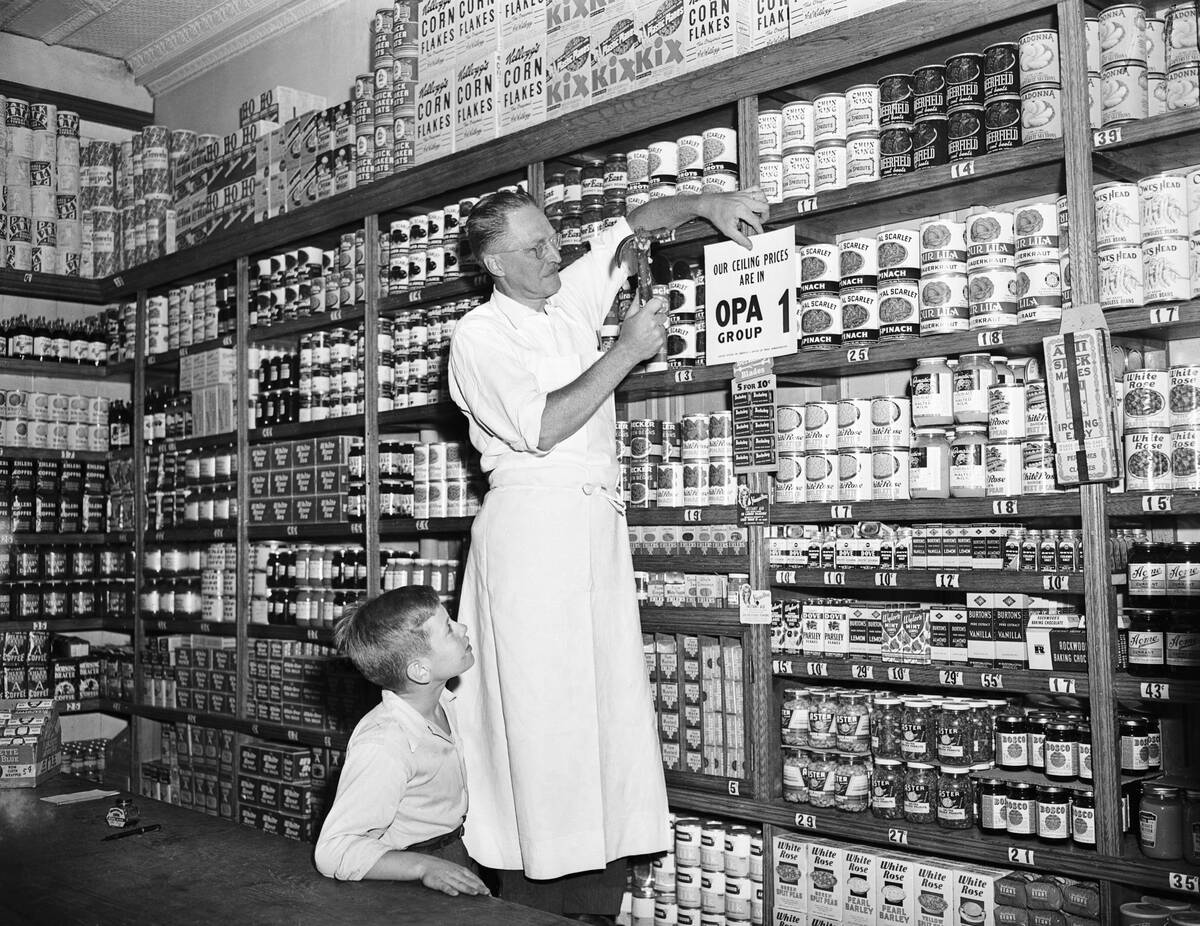
The 1940s saw a lot of change in the grocery industry, as the war years brought food rationing and encouraged shoppers to use ration books and plan their meals carefully.
Later in the decade, shoppers saw a shift from small, local markets to larger, self-service grocery stores. Technological innovations also led to a rise in frozen and pre-packaged convenience foods.
Fitness was focused on outdoor activities.
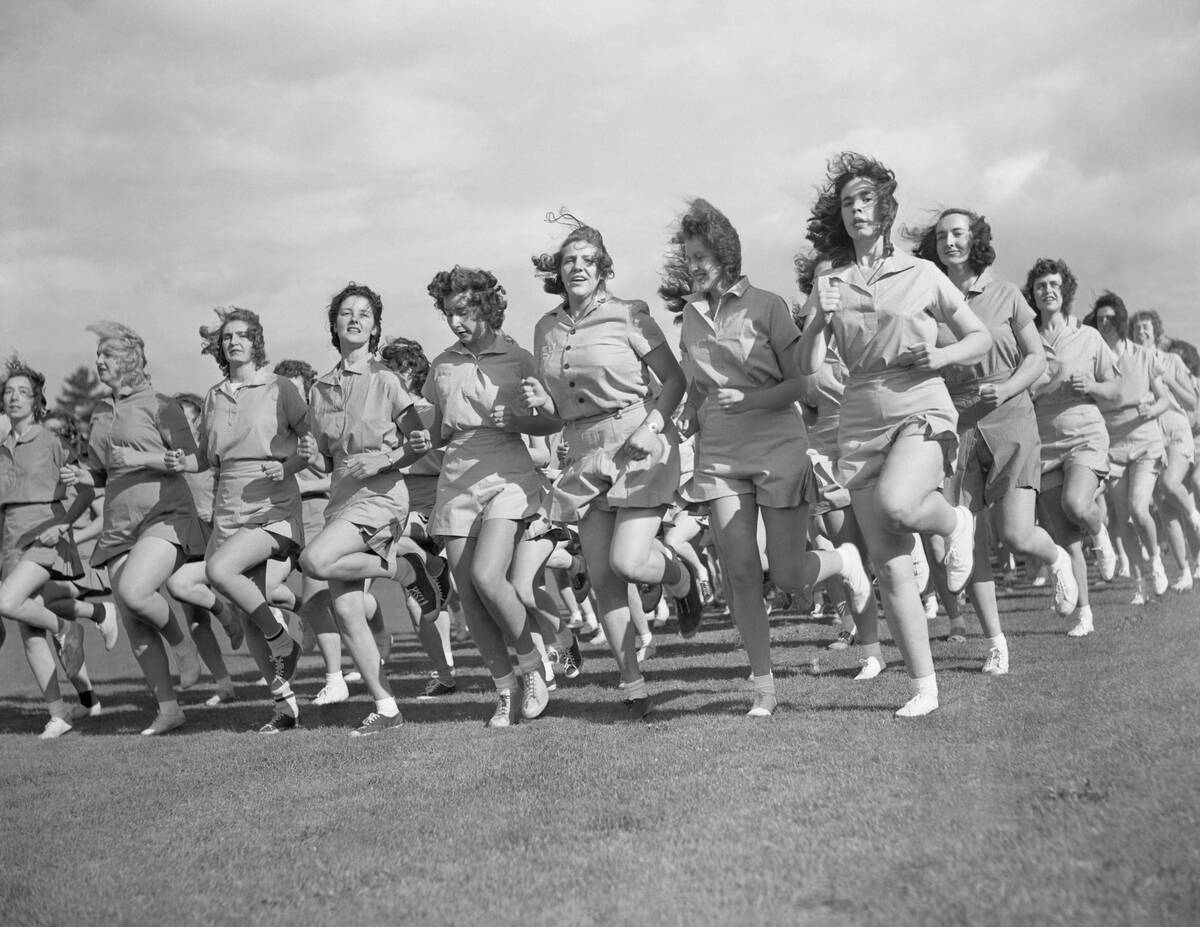
This photo of a women’s fitness class shows a scene typical of the decade, with a large group running in a structured outdoor program.
“Keep Fit” programs became popular during the 1940s, and the modern concept of physical fitness as a form of self-care began to take shape. The decade also saw the rise of the first fitness gurus, such as Jack LaLanne.
Bars were local hubs.
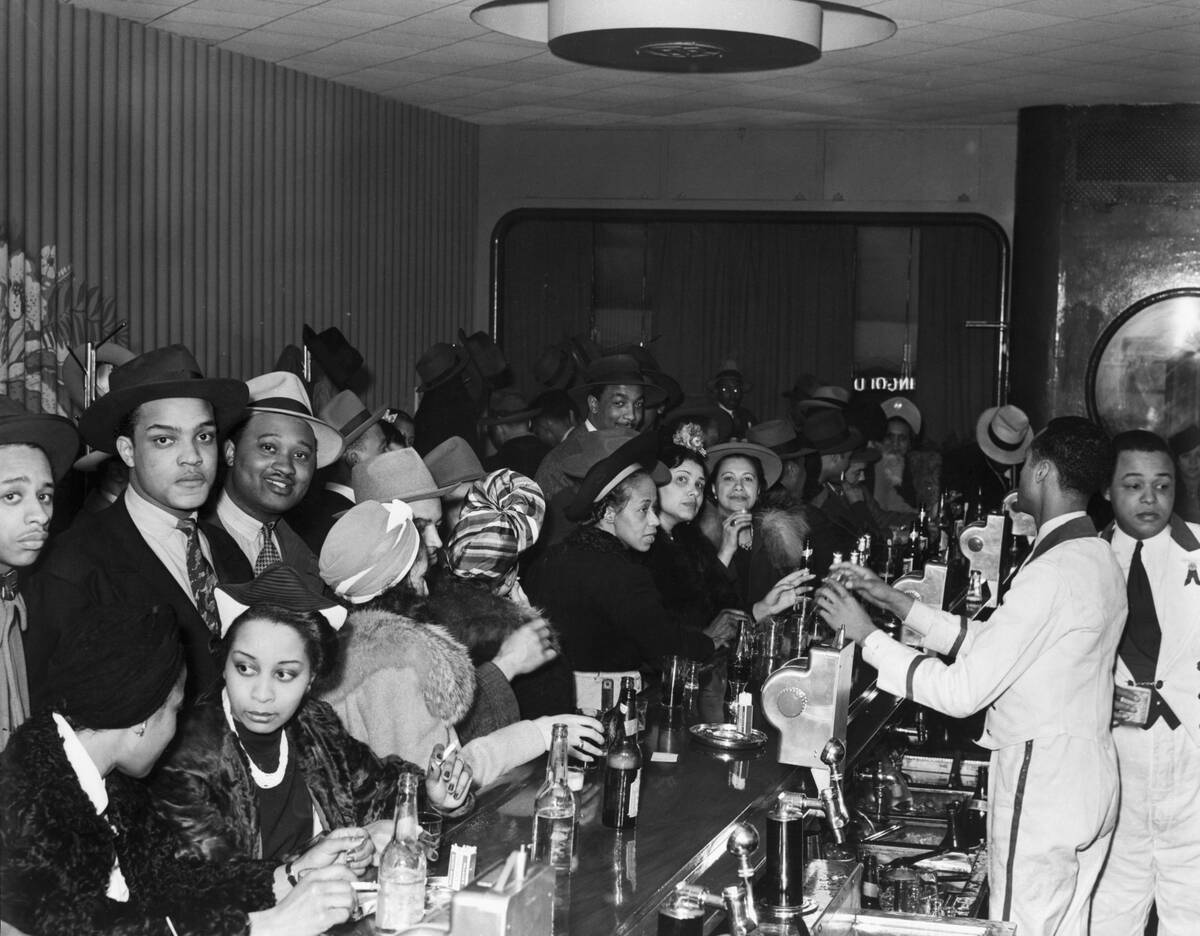
Then, as now, the neighborhood bar was a place for people to meet up, cut loose, and swap stories — but the bars of the 1940s were considerably different places.
For starters, the phenomenon of openly drinking in public was still somewhat new, as Prohibition had only been repealed in the previous decade. There’s also the fact that most bars were still racially segregated, which is on full display in this photo of a Chicago bar.
Kitchens were at the forefront of technology.
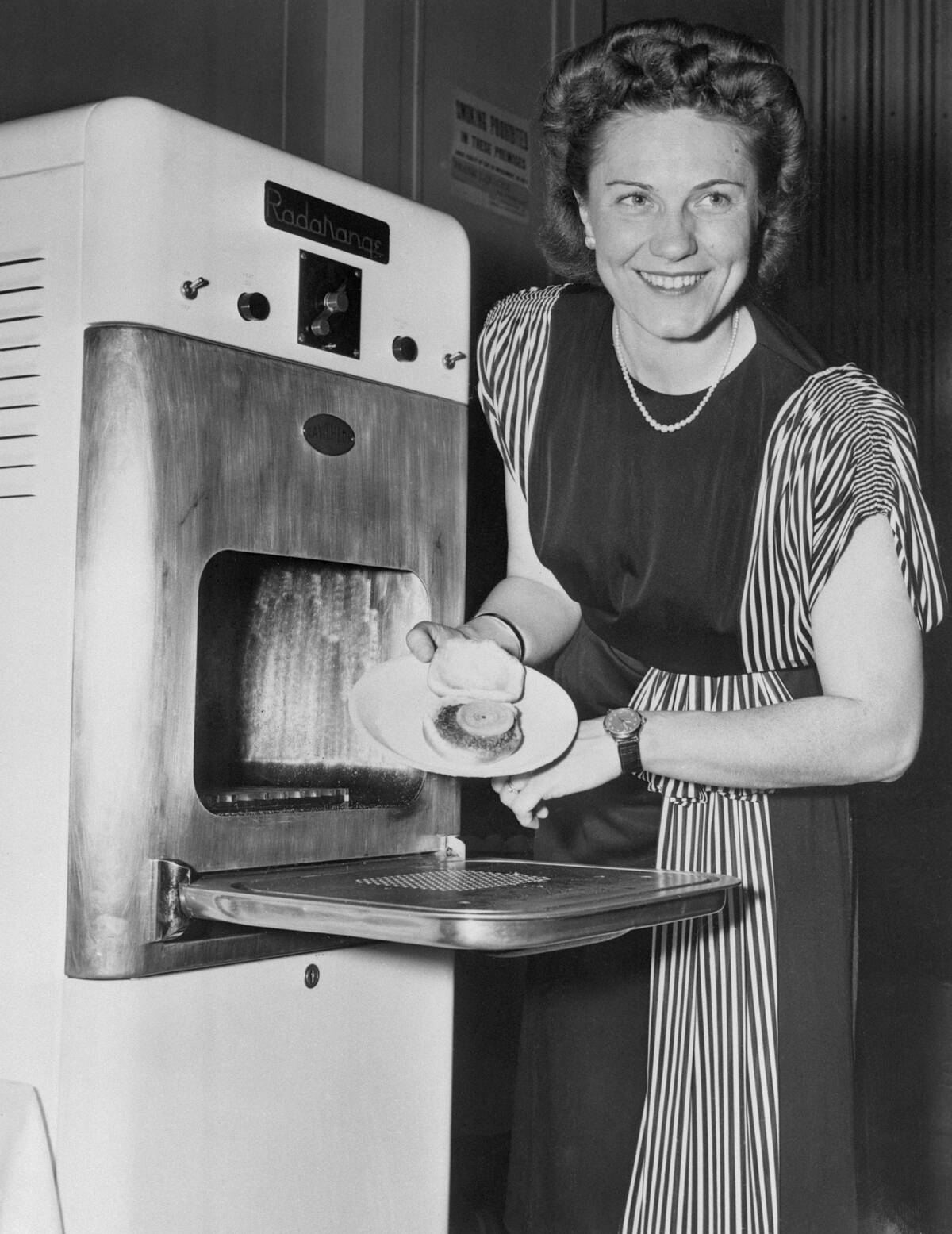
Kitchen technology saw a major boost toward the end of the decade, largely driven by wartime innovation and a postwar boom in consumer goods.
This photo shows a woman removing a hamburger from the “Raytheon Radarange,” a new spin on the conventional oven which utilized something called a “Magnetron” that could apparently cook a chicken in just four minutes.
Women’s baseball flourished.
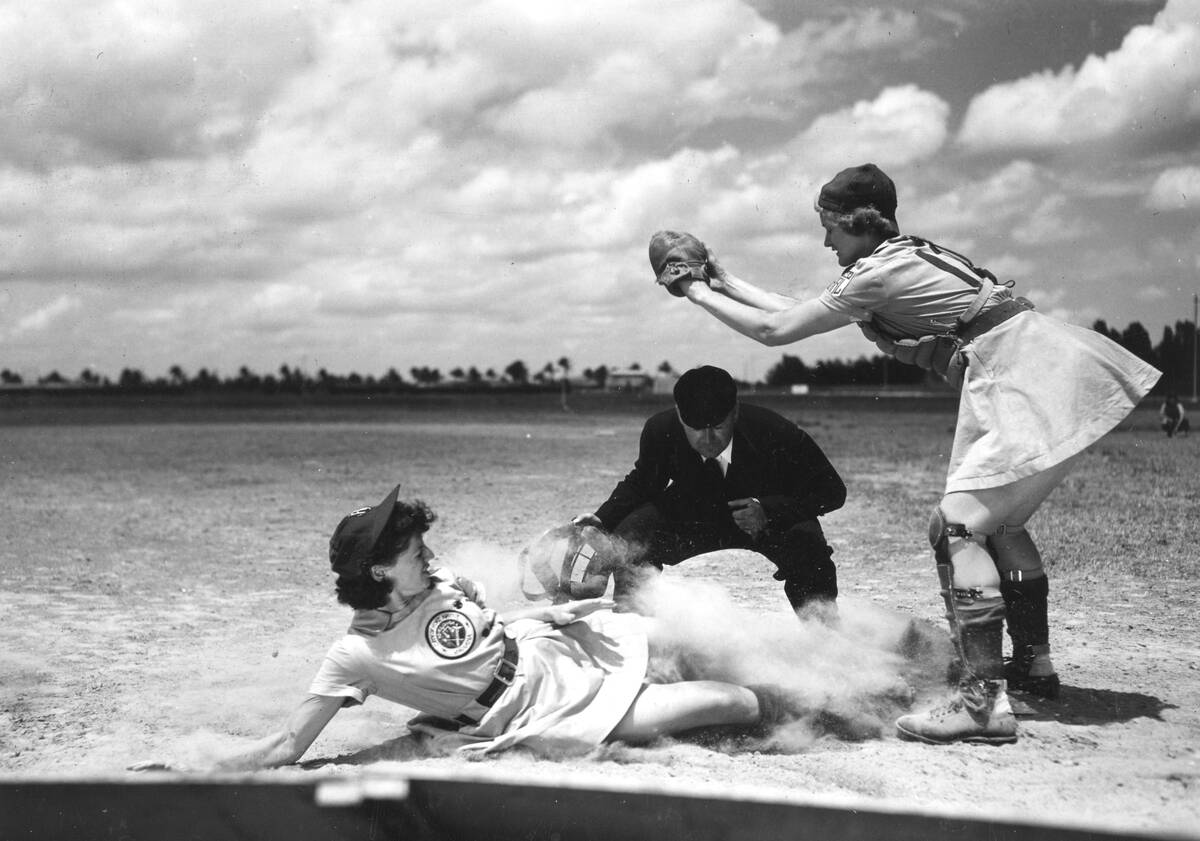
With many of baseball’s biggest stars serving in the military, Major League Baseball experienced a low ebb in the 1940s. This gave rise to the All-American Girls Professional Baseball League, which was founded in 1943.
The AAGPBL was ultimately a short-lived league, but it became a beloved part of American sports culture. Movies like A League Of Their Own brought teams like the Rockford Peaches and Chicago Colleens to modern audiences.
Vegas wasn’t Vegas just yet.
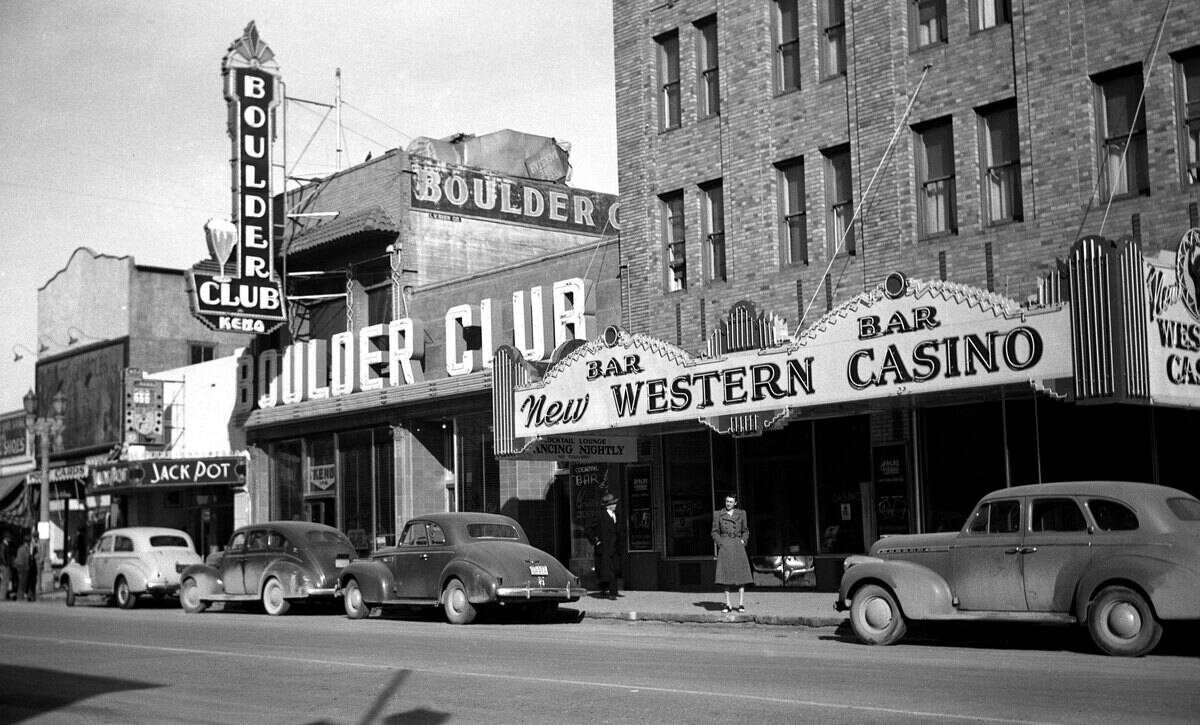
This 1942 photo of Las Vegas is almost unrecognizable, but the fact that it shows a casino and a nightclub gives an indication of what the city would later become.
After Nevada legalized betting in the early 1930s, hotels and casinos slowly but surely started trickling into Las Vegas. The opening of the glamorous Flamingo Casino in 1946 could be seen as the beginning of the city’s modern era.
Migrant workers were agricultural heroes.
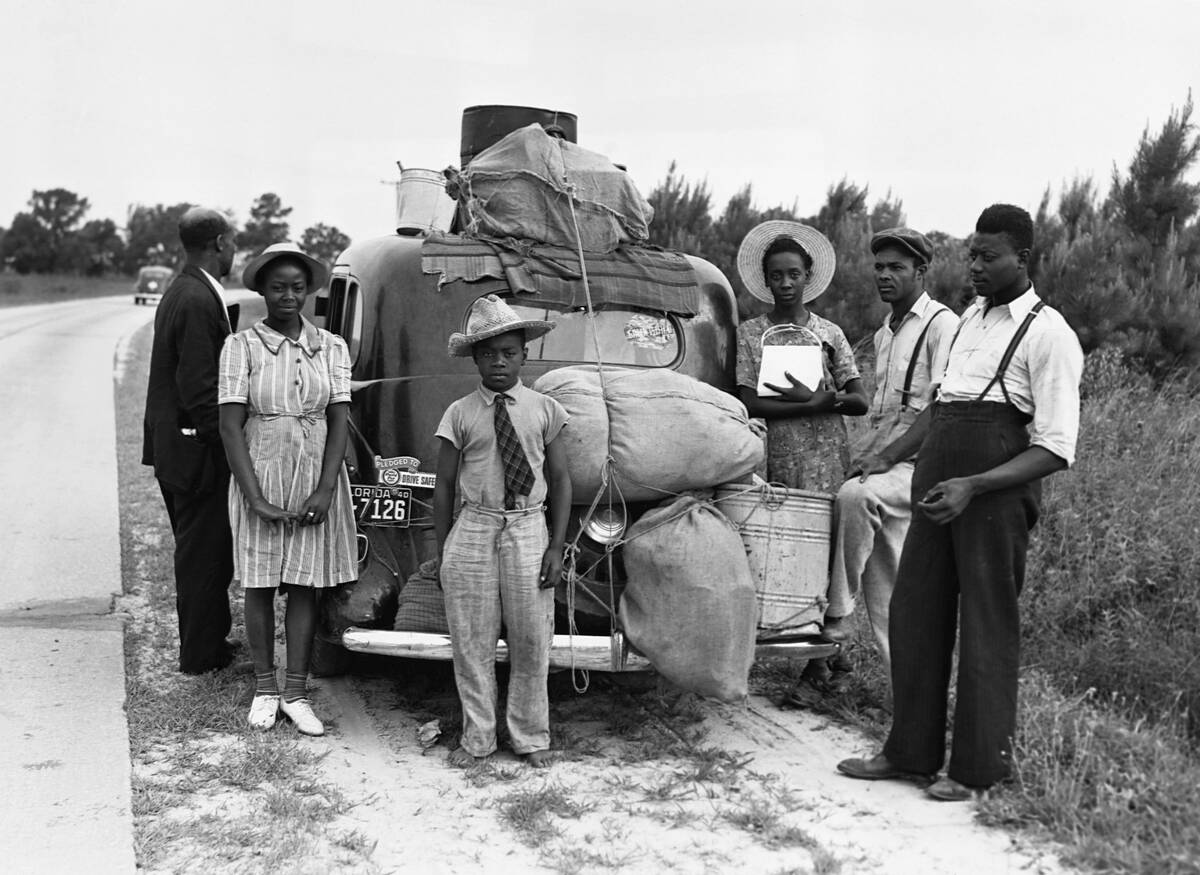
With many of the country’s men fighting in World War II, the demand for workers in agriculture surged. In many cases, these workers were poorer people from the south.
Later, initiatives like the Bracero Program brought in even more workers from Mexico to fill labor shortages. Workers fulfilled a critical need, but often faced harsh conditions such as low wages, poor housing, and long hours.
Playtime was important.

This 1941 photo could be seen as a calm before the storm, as it shows a carefree moment in the months before America entered the war.
The years that followed would be a difficult time for the country, but as wartime restrictions were lifted and the mood became more optimistic, new parks and playgrounds sprung up around the country.
Searchlights were used during times of peace as well as war.
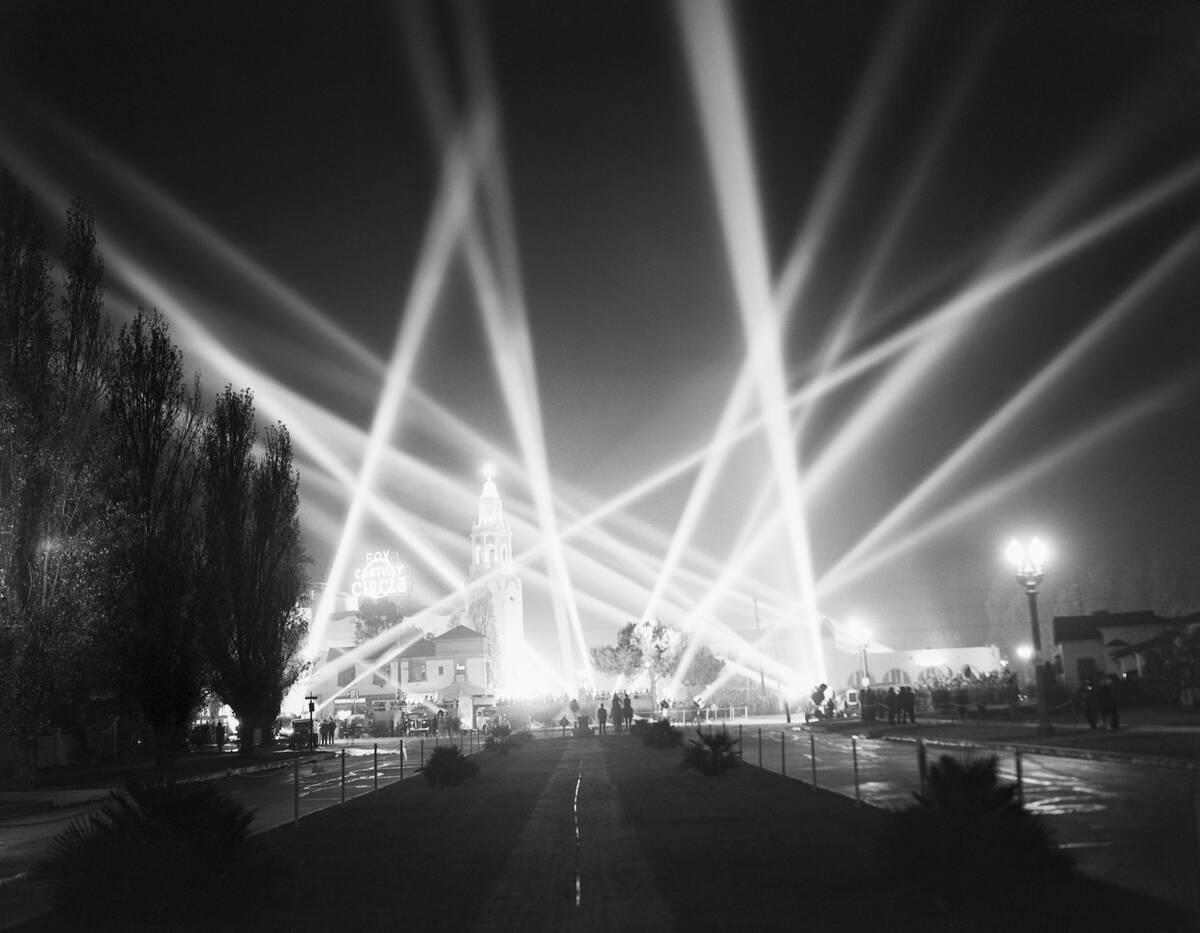
This image shows a dizzying array of searchlights over Hollywood in 1940, all set up for the premiere of Charlie Chaplin’s The Great Dictator.
It’s a fascinating image, as the movie was inspired by the geopolitical climate of the early war years, even though America had not yet entered the war. Of course, after the attack on Pearl Harbor, searchlights would be reserved for military use and grand Hollywood galas would take a backseat.
Television started to emerge.
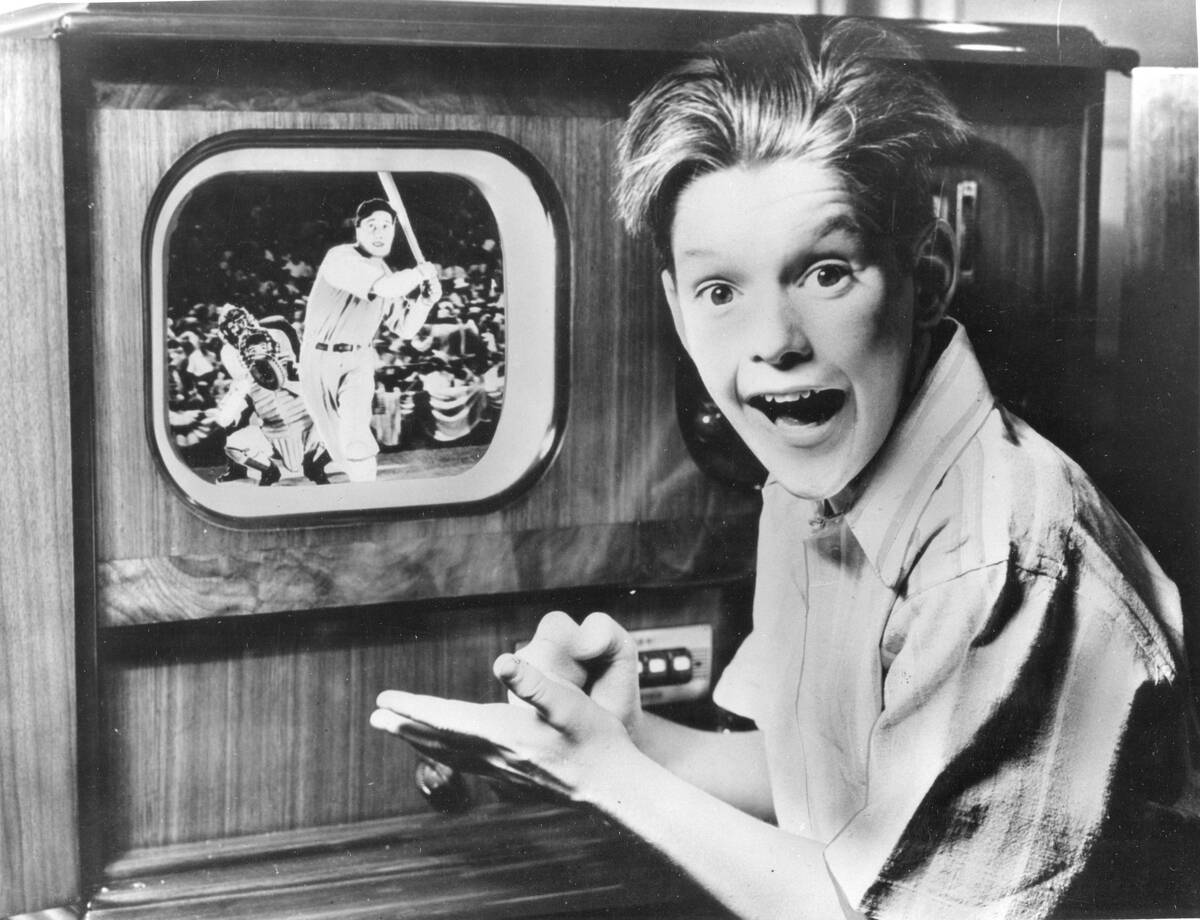
This 1949 photo is staged, but nonetheless shows the enthusiasm and wonder that people would have felt after seeing a television set in action.
While the TV industry was still in its early stages, networks like NBC and CBS started to create programming that would become beloved in the decades to come. Most Americans didn’t have access to television in the 1940s — but this would change dramatically in the 1950s.
The world got to know Marilyn Monroe.
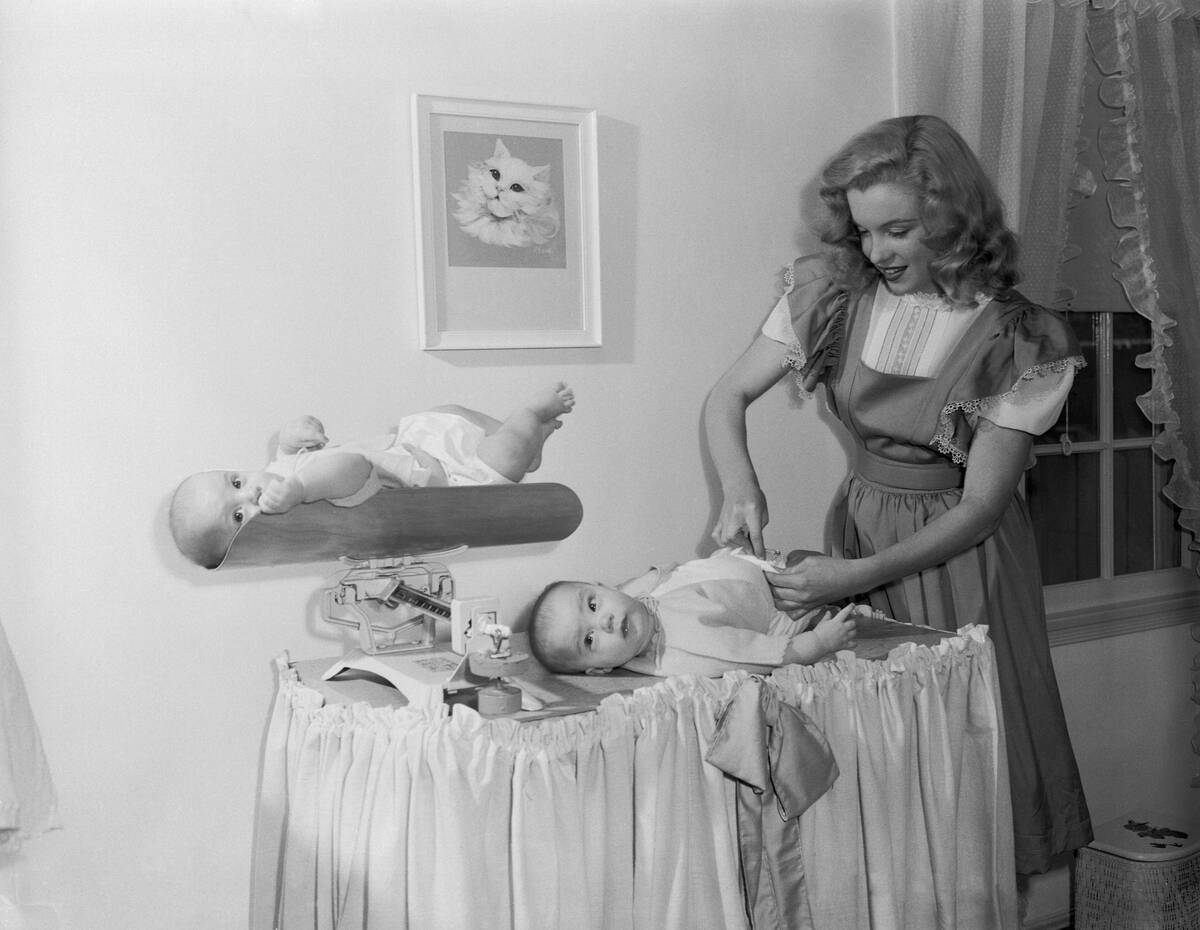
Marilyn Monroe was probably the most iconic woman in the world during the 1950s, but she first became a public figure in the ’40s.
This photo shows an 18-year-old Monroe shortly after she signed a seven-year contract with 20th Century Fox. She’s shown with the twin boys of a studio worker.
America’s pastime was changing.
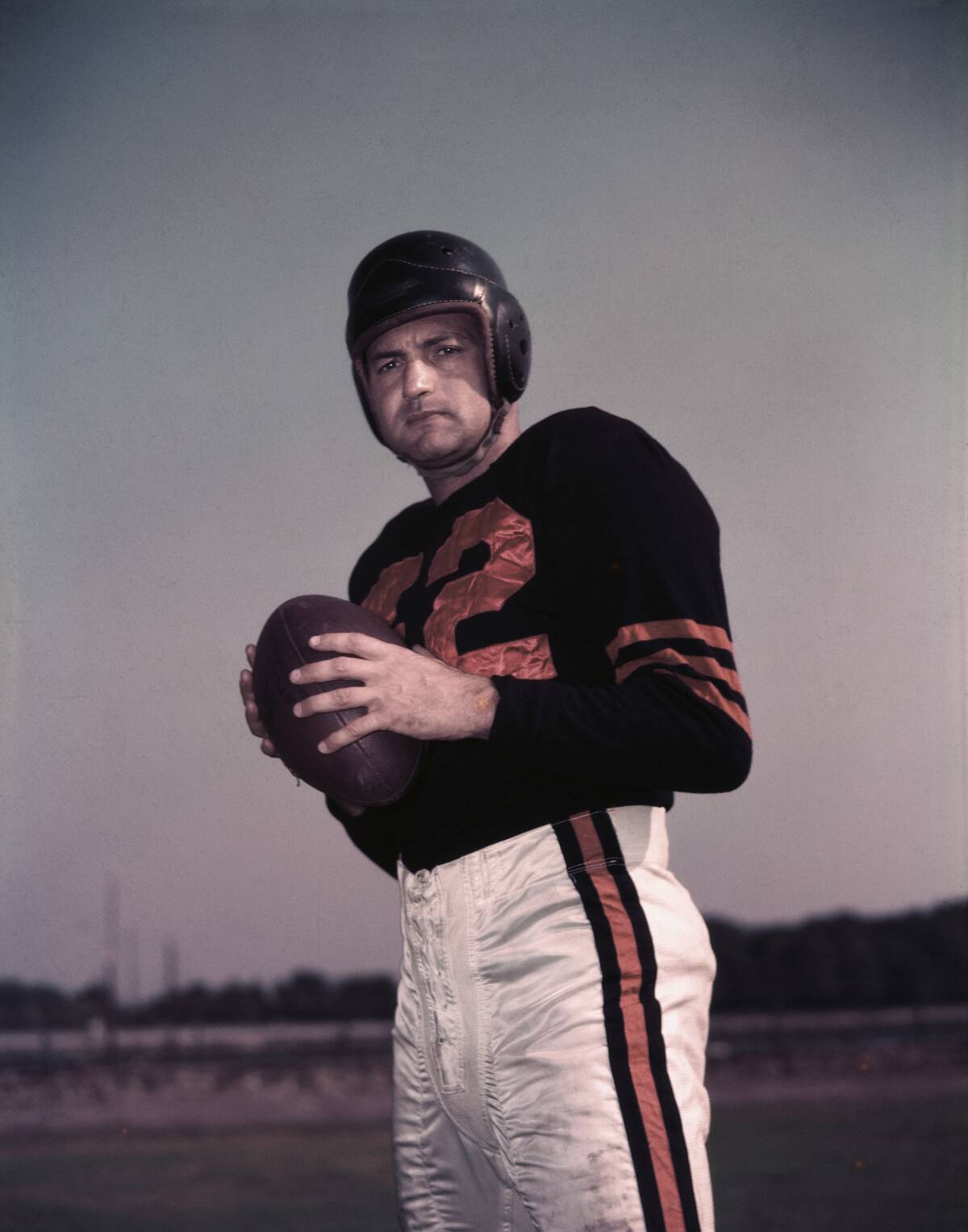
Baseball was known as America’s pastime, a position it would enjoy until the 1950s or ’60s, but football was undoubtedly on the rise in the midcentury years.
This photo of Chicago Bears quarterback Sid Luckman demonstrates the emergence of the pro game’s popularity. Football had once been seen as a collegiate pursuit, but professional football became a major force during the war years.
Gas was in short supply.
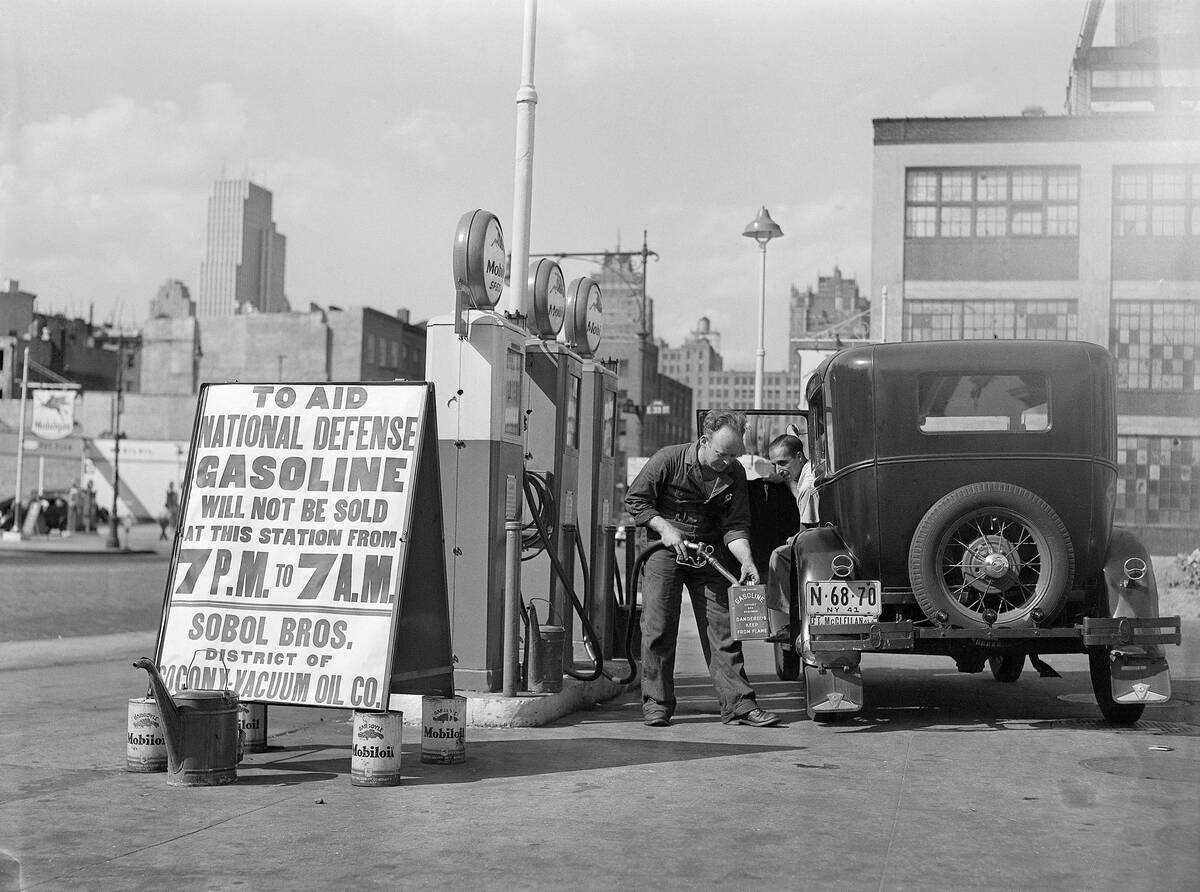
Everything from food to materials to gasoline itself was rationed during the war years, as the War Production Board coordinated efforts to ensure that civilians weren’t wasting goods.
The Governmental Conservation Edict ensured that civilian vehicle operators could only fuel their cars between the hours of 7 in the morning and 7 at night, as shown on this sign.
The Macy’s Thanksgiving Parade was iconic.
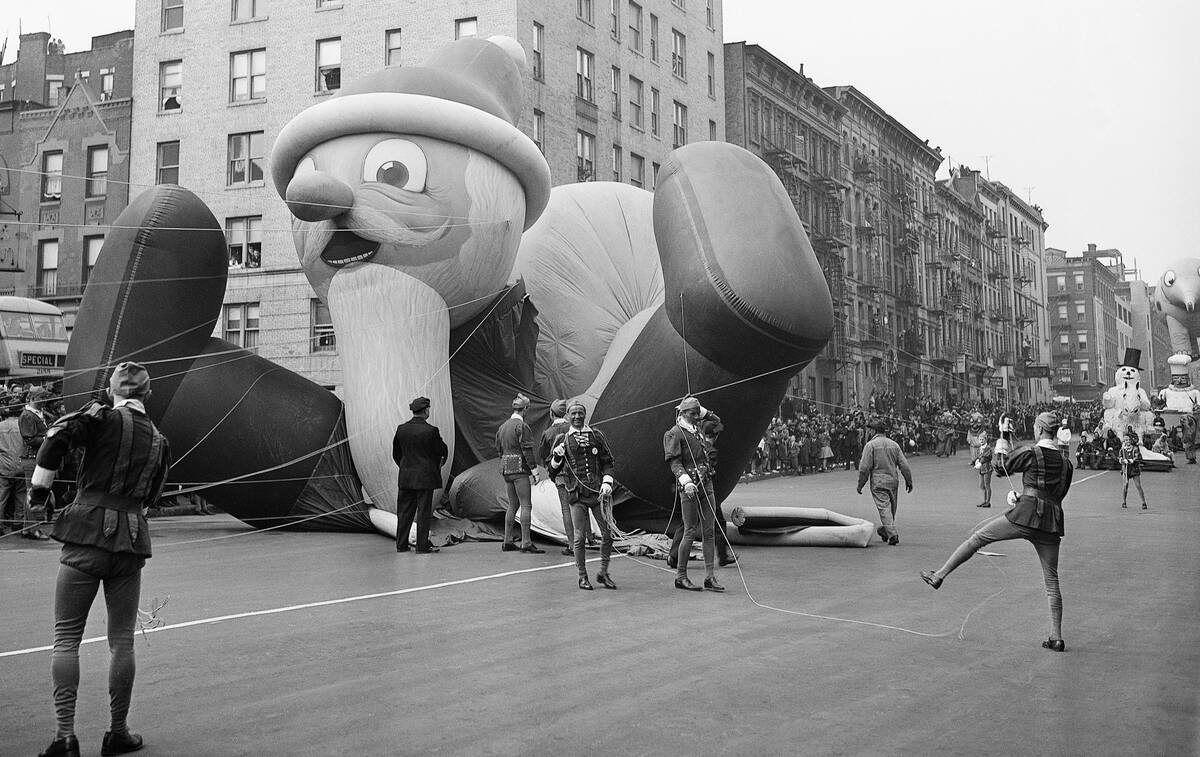
This photo of a partially-collapsed Santa Claus parade balloon at the 1941 Macy’s Thanksgiving Parade is poignant, as it was snapped scarcely two weeks before the attack on Pearl Harbor.
The parade was halted during the war years, so the 1941 parade was the last one New Yorkers would see for awhile. Following the war, the parade came back, featuring larger and more elaborate floats. It has become a cherished American tradition.
Diners were vital hubs.
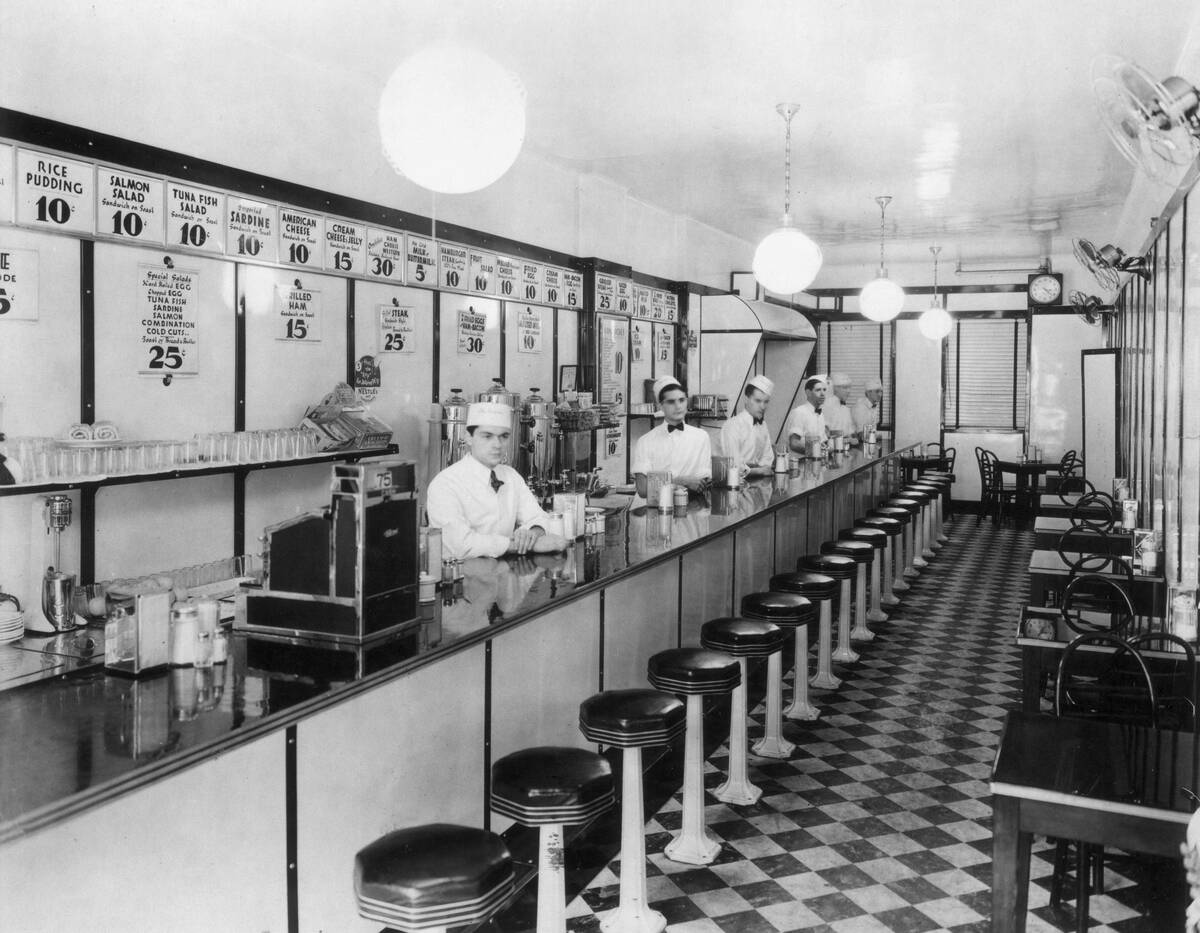
Diner culture in the 1940s isn’t romanticized nearly as much as ’50s or ’60s diners, but these fast-service establishments were still a mainstay of communities from coast to coast.
They offered inexpensive, convenient food and became popular in urban and suburban areas. The rise of car culture also dovetailed with diner culture as the decade came to a close.
The war shaped fashion.

The war years led to fabric shortages, which in turn made practical, simple styles popular during the first half of the decade.
After the war ended, fashion designers once again had free reign to create imaginative new styles, and consumer optimism ensured that Americans were eager to pick up the latest fashions.
Almost everyone took the train.

This moody image of sunlight pouring into New York’s Grand Central Terminal shows the grandeur of this crucial transportation hub.
The station wasn’t just used for trains, either, as it featured various shops and dining spots, along with areas of architectural interest. Today, its iconic station house is a National Historic Landmark.
Segregation was in full effect.
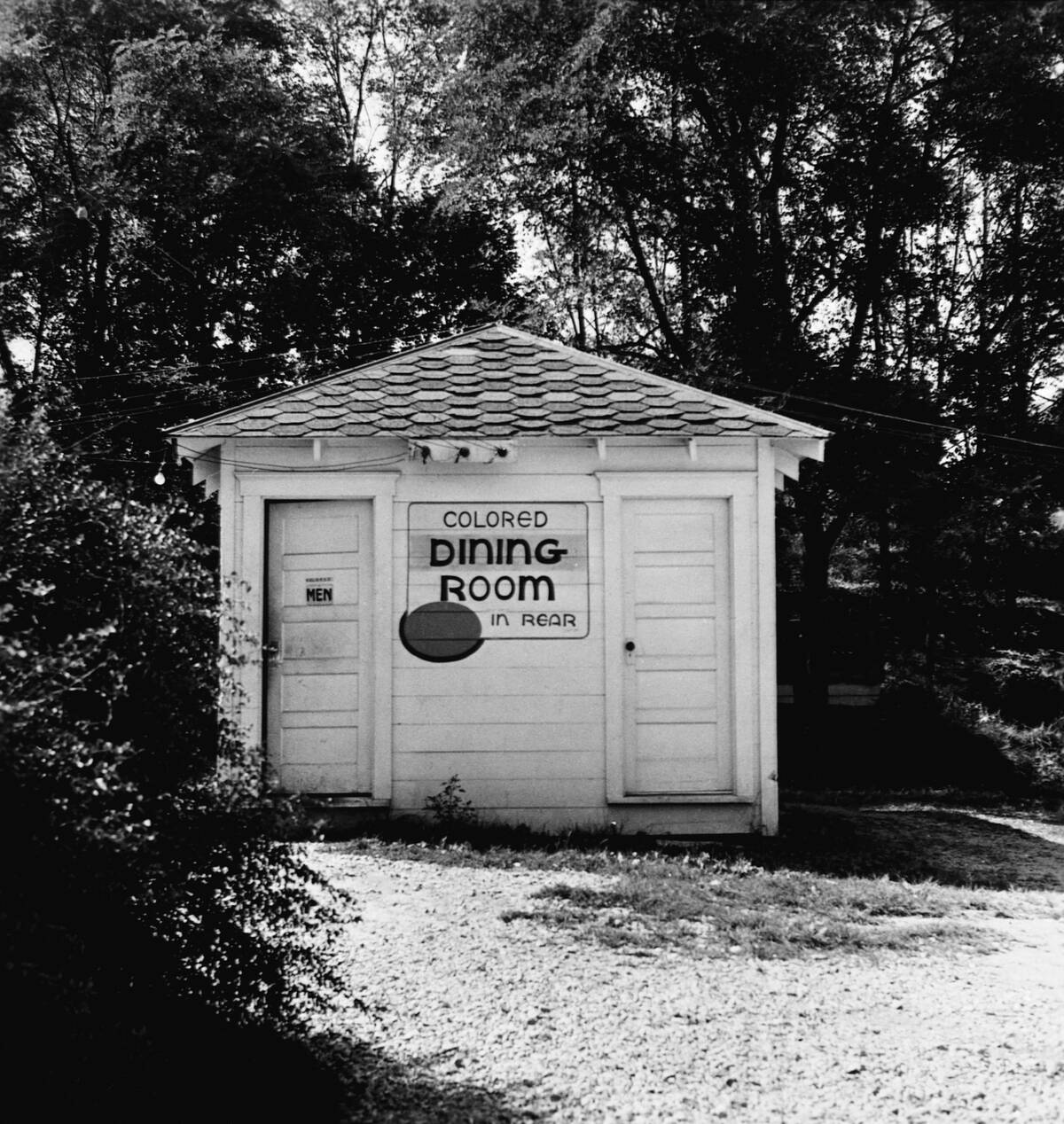
Less than a century removed from slavery, many parts of the country still enforced racial segregation thanks to Jim Crow laws that mandated the separation of races.
While this was still on full display in the 1940s, the early stirrings of the Civil Rights movement took place during this decade. The 1948 desegregation of the U.S. military, along with the formation of civil rights organizations, helped to shape the decades to come.
Americans found time for romance.
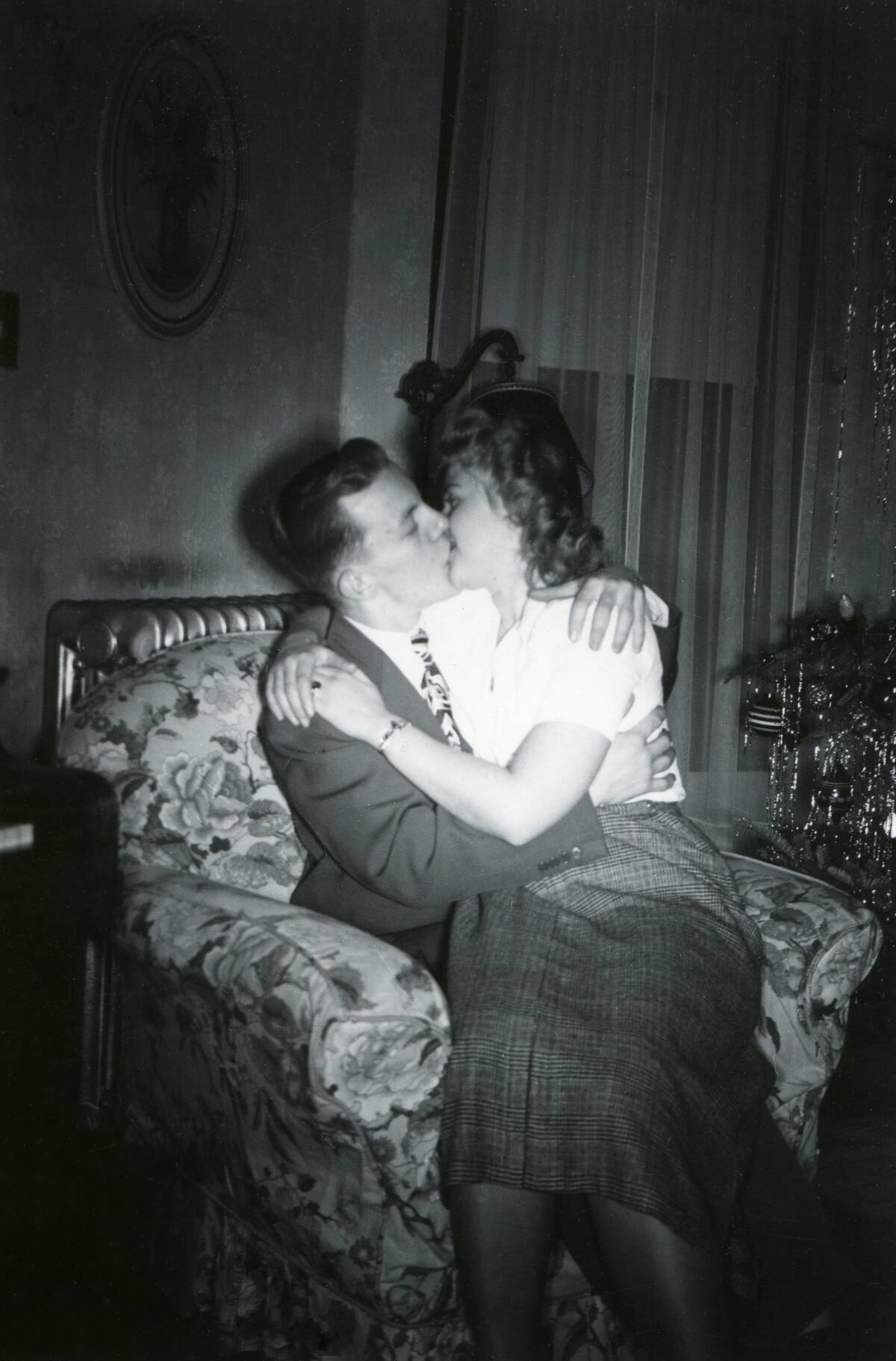
People will always find time for romance, no matter how dire the circumstances. This photo from the 1941 holiday season was snapped shortly after the attack on Pearl Harbor and America’s subsequent entry into the war.
If anything, the immediacy of the war would have made Americans more amorous than ever, as military service would soon separate young couples.
Even in war, there were times of peace.
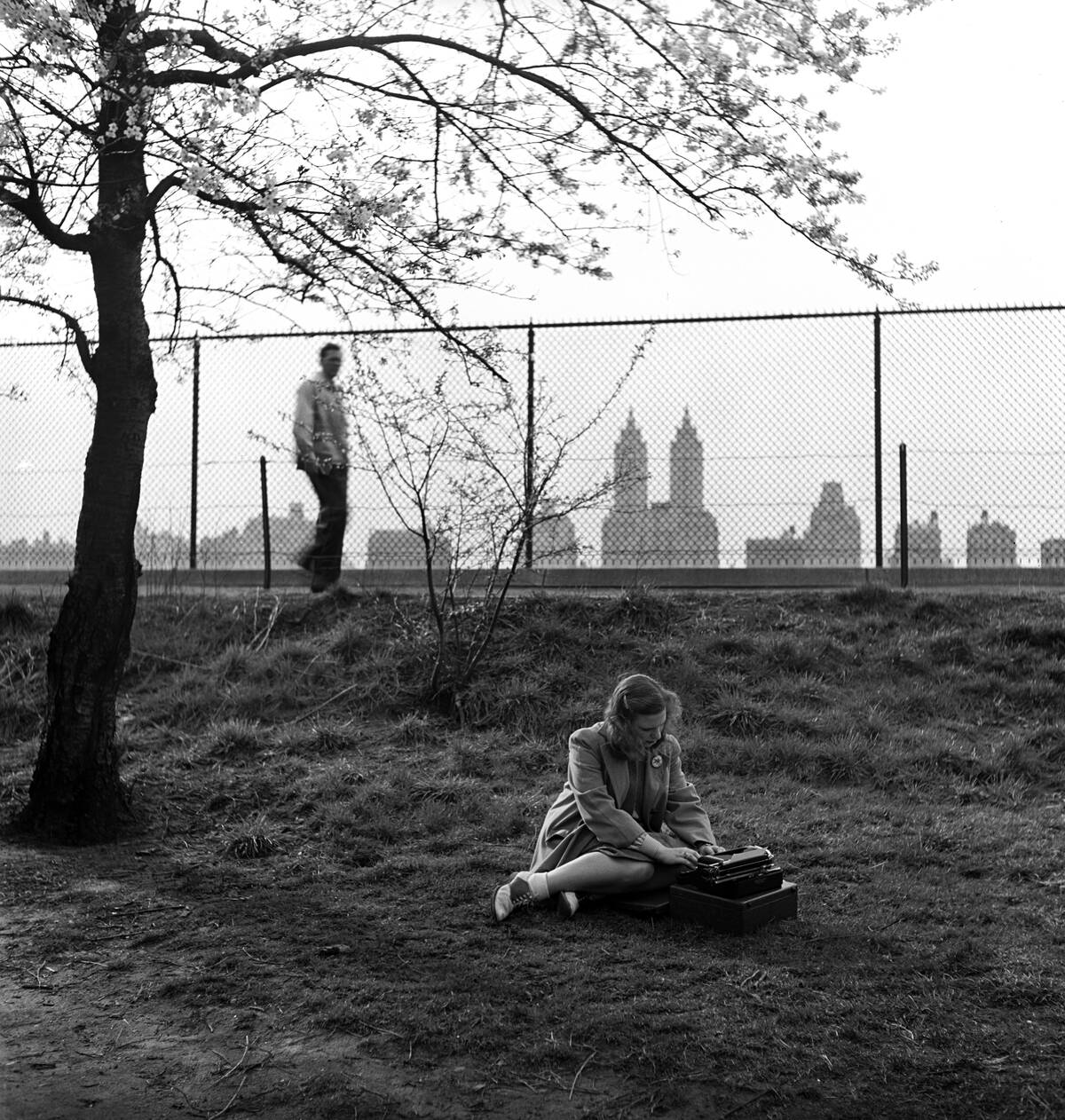
This contemplative photo shows a young woman as she writes out her thoughts next to the Central Park Reservoir in 1942. It’s notable that she isn’t writing with a pen and paper, and has instead lugged out a whole typewriter.
It’s a compelling visual reminder that even during the darkest days of World War II, life in America was largely peaceful.
Americans love their heroes.

This photo of musician Frank Sinatra with his friend, boxer Joe Louis, shows two of the more famous men of the era.
While Sinatra is one of the most iconic singers of all time, Joe Louis is a fascinating study in celebrity and racial dynamics. He was one of the most revered men in the country and likely the first African-American to become an established nationwide hero — even though he still dealt with segregation.
Postwar optimism was on full display by the late ’40s.
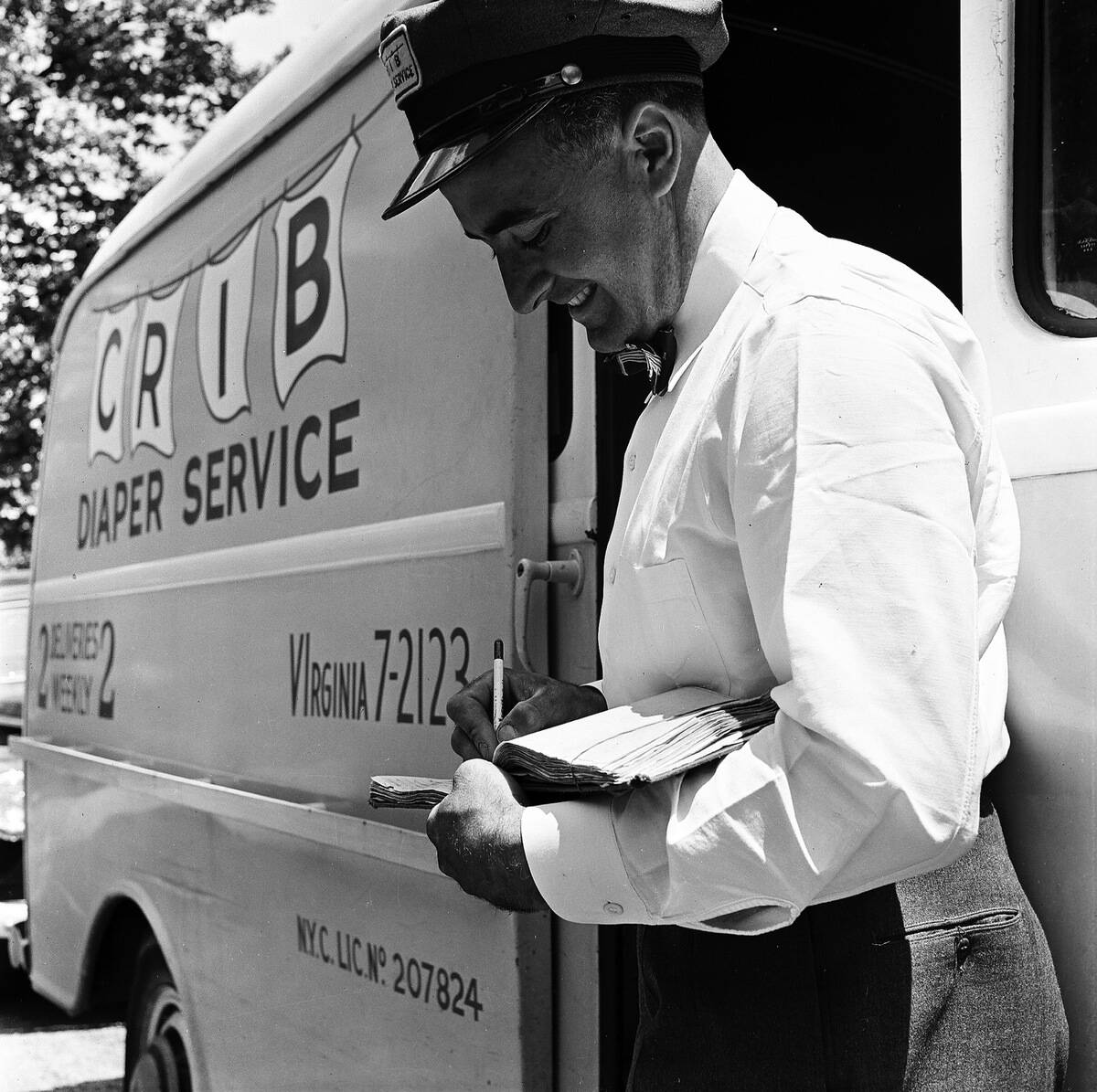
With the development of Levittown on Long Island in the late 1940s, the modern American suburb was born. This photo shows a worker from a diaper service as he conducts his rounds on Long Island in 1947.
The standardized and quickly-constructed homes of Levittown, coupled with a serene suburban environment, created the template for innumerable American suburbs.




